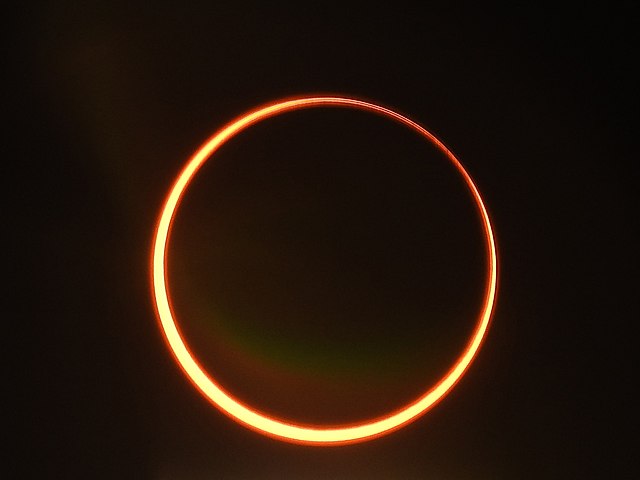Saros cycle series 132 for solar eclipses occurs at the Moon's descending node, repeating every 18 years, 11 days, containing 71 eclipses, 42 of which are umbral. The first eclipse in the series was on 13 August 1208 and the last eclipse will be on 25 September 2470. The most recent eclipse was an annular eclipse on 26 December 2019 and the next will be an annular eclipse on 5 January 2038.
A partial solar eclipse on December 14, 2001, viewed from Minnesota (Saros 132, Member 45)
An annular solar eclipse on December 26, 2019, viewed from Nilambur, India (Saros 132, Member 46)
Solar eclipse of December 26, 2019
An annular solar eclipse occurred at the Moon’s descending node of the orbit on Thursday, December 26, 2019. A solar eclipse occurs when the Moon passes between Earth and the Sun, thereby totally or partly obscuring the Sun for a viewer on Earth. An annular solar eclipse occurs when the Moon's apparent diameter is smaller than the Sun's, blocking most of the Sun's light and causing the Sun to look like an annulus (ring). An annular eclipse appears as a partial eclipse over a region of the Earth thousands of kilometres wide.
Annularity as seen from Jaffna, Sri Lanka
Partial from Nabih Saleh, Bahrain, 3:32 UTC
Partial from Kochi, India, 3:59 UTC
Nilambur, India, 3:59 UTC





